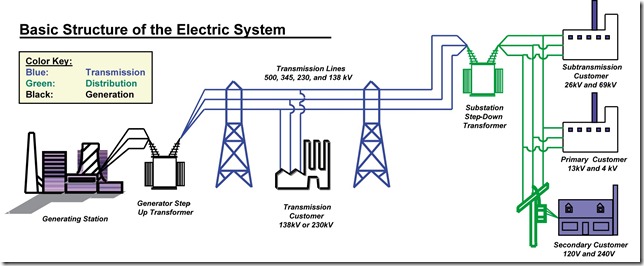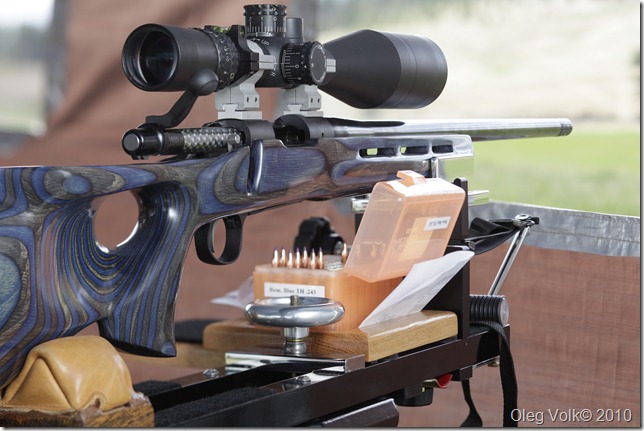I’ve often thought about creating a multipart series regarding the dangers and truth behind “Green” technology. Laziness has been winning on the front of me not doing it. When I started this post Alan had just posted something about FERC changing the allowable deviation in frequency of the power grid. That was then followed by MRS over at RNS posting something regarding Germany decommissioning a bunch of their nuke plants.
So for those who know me personally, you’ll have an idea of how much I really know about all this. Seriously I’m not going to go into full detail on everything I know about all this stuff. For those who don’t know me, my job entails me knowing lots about the power system and how it works. It’s funny really, I’m a EE code monkey, who knows power systems, digital signal processing, and embedded systems. For exact details on what I do or where I work, sorry, see the disclaimer. Suffice it to say I know lots about transmission, distribution, industrial installations, and power protection and operation. Teaching is selling, and what I hope to do here is provide a solid description and lesson in how the power system works. Describing what is actually going on so when your legislator runs his mouth off you’ll know it.
How am I going to do it. I’m going to write a multi-part series covering the power system, how it works, and then I will discuss how different proposals and political pushes end up affecting it. I will also answer any questions that come in, either in the comments directly or in a post if I feel it’s significant. So in todays installment I’m going to cover at a very high level an overview of the power system, what different parts do, and how they relate.
General System Overview:
To begin with we have the power system. It consists of three things at the core:
- Generation
- Transmission (I’m including distribution in this)
- Load

Generation is responsible for converting different types of energy into electrical energy. Usually the primary energy is kinetic, such as spinning a turbine, a spinning windmill, or the energy from photons from the sun. Usually generation also involves the creation of that kinetic energy, such as heating water to create steam. For efficiency, as well as ease of future steps in the system, generation mainly occurs in AC. Some generation is done in DC, such as solar but it is not common. I’ll go into the details of generation later.
Once we have created electrical energy we need to move it to where it’s consumed. This is called transmission and is due to the fact that most generation occurs well away from densely populated areas. Many argue that green technologies will move energy production closer to the consumers, however current implementations are proving otherwise. A prime example is offshore wind farms, solar plants are in the middle of the desert, in Washington wind farms are going in all over on the eastern side to power western Washington. Back to the matter of transmission though the power has to be moved to where it’s consumed. To do this it is moved on large sets of power lines, such as these. Prior to being connected to the lines though the voltage is raised considerably. This is to minimize power losses on the line, the details of why will be covered later, the voltage is raised so a lower current flows along the line. On the other end when it gets closer to the consumer the voltage is lowered again. AC power allows these changes to be easily done by the use of transformers. After it has be stepped down again it has now moved into the distribution system. In the distribution system it is split up and fed to individual customers and further stepped down in voltage from what is used on the distribution system. Once we arrive at the customer we get to the loads. Again, later DC transmission will also be covered, it does happen but not frequently.
Loads are consumers, you and I really, that are actually using the power to perform a task. There are two types of loads (electrically) really, inductive and capacitive. Again the details will be covered later, but loads cause the relationship between current and voltage to be different. Not only can it be different, but it can get out of whack to the point where your utility has trouble metering it. When that happens they’ll stick you with an extremely high rate until you fix it. Again I will cover the details of all of that later, why it’s a problem, and how they solve it. Most home users though just have simple loads such as their TVs, computers, washing machine, dryer, stove, and refrigerator to name a few. TVs and computers often contain a internal converter since most of their electronics actually run off of DC instead of AC, this conversion is of interest to the power system as that is what the system really sees as the load. Out of the list the other big hitter is refrigerators, washing machines, and dryers. All three of which contain motors. Motors are a special type of load for the system especially since their operation and efficiency is directly tied to the frequency of the input power.
Overall there are numerous things through the system that are trying to guarantee the following:
- 60Hz Nominal frequency (50Hz in a few places). The system all needs to be synchronized, why will be covered later..
- Steady wall voltage 120 VAC in the US, 220 in Europe. The bottom line is that voltage needs to be correct. Fluctuations, and running high or low consistently leads to "dirty power” issues
- Reserve/Absorb power. When you flip your light switch you want them to turn on. You don’t want to wait for the generator to spool up. Just the same when you turn off the light, there’s now excess power on the system.
Slowly over the next couple weeks I’m going to cover how each part works in detail, how they relate to each other, and ultimately why you care. There’s a lot going on behind the screen and as usual it is a massive pie to try and understand. Seriously, these posts are going to get huge, I will try to keep them as down to earth as possible, but at the same time providing the details to those who really want it. If you have questions, feel free to post in the comments, if they’re closed hit the contact me. I would like feedback, if I’m shooting way over peoples heads it’s going to be hard for me to tell. I have had many say I’m good at explaining this stuff, but they could have just been humoring me.
As a push for people who may stumble across this later, to find all the parts of this series, the full series list is here. My goal will be a section a week with it posting every Friday Wednesday starting next week till I think it’s fully covered and there’s no more questions coming in.
Update: The wife said I should just do it on hump day. It will help even out posts through out the week so it’s a good idea.
TMM is the owner, editor, and principal author at The Minuteman, a competitive shooter, and staff member for Boomershoot. Even in his free time he’s merging his love and knowledge of computers and technology with his love of firearms.
Many know his private name and information however due to the current political climate, many are distancing themselves due to the abandonment of Due Process.













